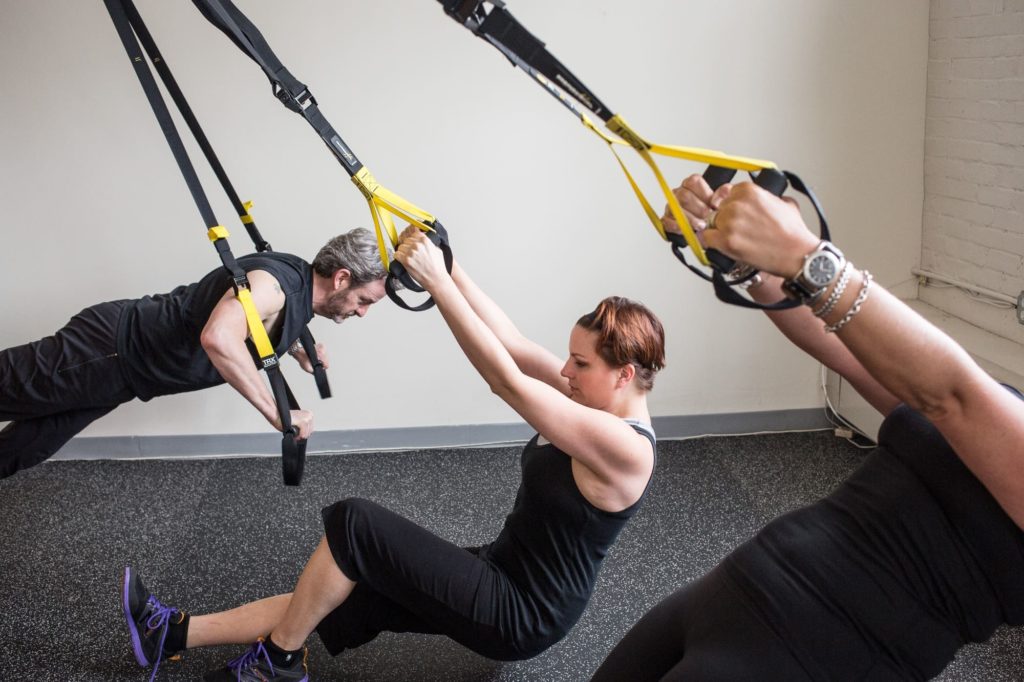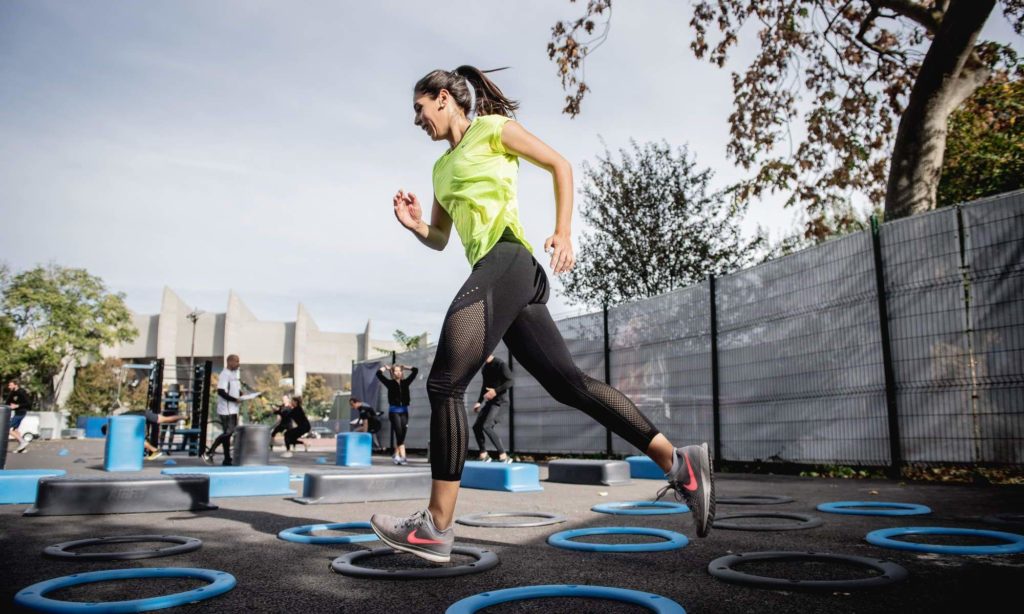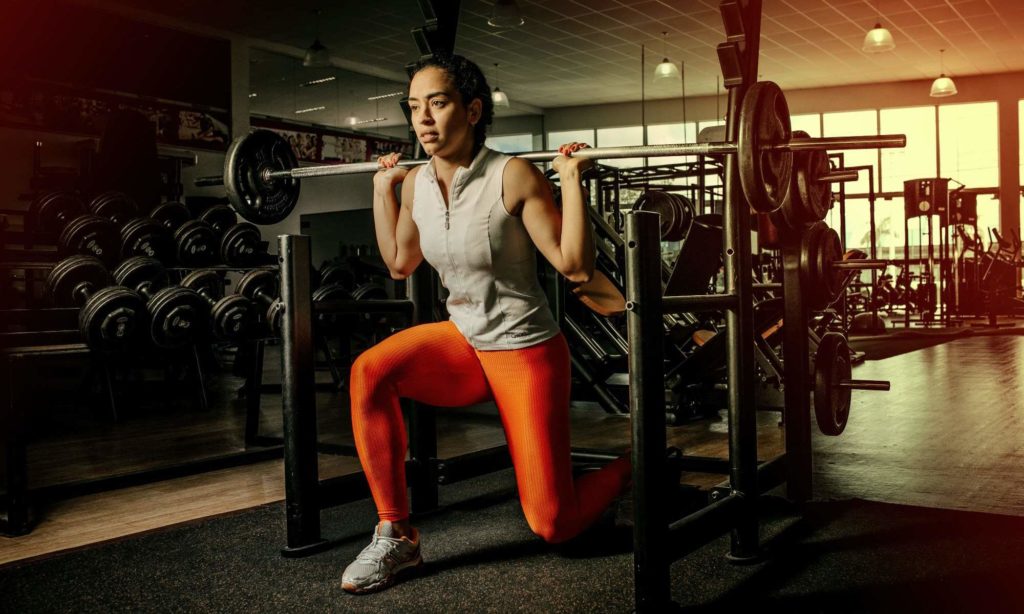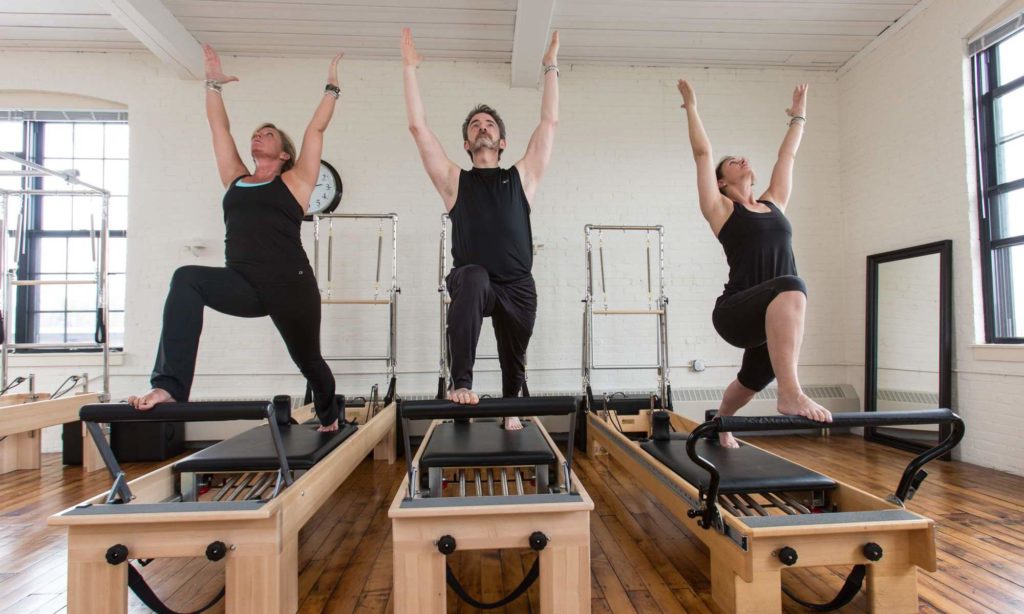
As an owner of a Pilates studio, people assume I just do Pilates 5-6 days a week and that’s all I need. Clients are surprised when I tell them that I’m all about cross-training: mixing multiple exercise modalities into workouts for exercise gains. In fact, I’m a real “gym rat.” Adding regular cardio and strength training sessions to my weekly regimen keeps me fit, strong, and free from boredom.
Our bodies are built to adapt to the same exercise stimulus, typically within about 2-6 weeks. The National Academy for Sports Medicine (NASM) refers to General Adaptation Syndrome (GAS) to describe how the body responds to stress physiologically. Canadian physician Hans Seyle, credited with proposing this theory in 1936 said, “The body will respond to the stress that is placed on it and a physical adaptation will occur over time in response to that stress stimulus.”
Bodybuilders and personal trainers use these principles of “periodization” all the time – changing up the frequency, intensity, and duration of workouts over a period of several weeks. But why don’t we apply them to other modalities like Pilates and Yoga? After all, aren’t we after the same overall fitness and health gains?
Typically you hear about cross training for professional athletes or dancers, but the benefits are really for everyone! Mixing up different kinds of workouts —or even mixing it up within the same workout — is shown to have benefits for all kinds of bodies. Average exercisers, weekend warriors, and even those who don’t train regularly can also reap the many benefits of cross training.
Benefits of Cross Training:
- Improves Overall Fitness – Research shows that our bodies respond well when we regularly vary the stresses placed on both our muscular system and our cardiovascular system. Shifting the stimulus on our bodies keeps all our systems — metabolic, mechanical, and neuromuscular —working to adapt. The result of mixing modalities can be improvements in strength, endurance, flexibility, mobility and more. Even balance and proprioception, which are especially important as we age, can improve when new elements are added to your workouts.
- Improves Daily Activities – When we exercise, our body learns to be functional — meaning we train our brain and muscles to perform those movements in everyday activities (Activities of Daily Living or ADL’s.) Doing similar movements in different planes or with different pieces of equipment can prepare your body to perform those movements anywhere. For example, think about unloading the groceries from the car — it involves squatting, lifting, pulling, pushing, twisting, curling; maybe even standing on one leg to kick the door closed. Using the same muscles in a new way leads to better gains in everyday muscular and mental skills & abilities.
- Reduces Risk of Injury – In one study from 2017, athletes who specialized in one sport had an 85% higher chance of getting injured than those who did multiple activities. Doing the same thing over and over sets you up for overuse injuries and joint dysfunction. Plus, cross training allows you to give one part of the body a rest if you are injured — a good approach for nagging injuries that don’t seem to heal. (hello hamstrings!)
- Helps Break Through Plateaus – “Progressive Overload” has been a guiding principle in the fitness industry for years and is based on research of muscle adaptation. The body is an extremely efficient machine and adapts very quickly to the stresses placed on it. If your workouts become too routine, the body has no reason to continue to adapt and you hit a plateau. Adding a new stimulus through cross training is a proven way to break through these plateaus.
- Reduces Boredom & Improves Exercise Adherence – Do you sometimes find yourself in the gym (or on the Reformer) doing the same routine each time, without much thought? While this may be easy for your mind, it’s not so great for your body, and eventually your workouts become stagnant and you stop seeing results. Adding some variety to your workouts can keep you mentally engaged and make it more likely that you’ll stick with it for the long term.
How To Cross Train
To gain benefits from cross training, simply mix up your weekly workouts — or add multiple components within each workout. Even changing the sequence of your exercises or doing similar movements using different equipment can have an effect on your fitness.
The U.S. Department of Health and Human Services Guidelines for physical activity state:
Adults should move more and sit less throughout the day. Some physical activity is better than none. Adults who sit less and do any amount of moderate-to-vigorous physical activity gain some health benefits.
- For substantial health benefits, adults should do at least 150 minutes (2 hours and 30 minutes) to 300 minutes (5 hours) a week of moderate-intensity, or 75 minutes (1 hour and 15 minutes) to 150 minutes (2 hours and 30 minutes) a week of vigorous-intensity aerobic physical activity, or an equivalent combination of moderate- and vigorous-intensity aerobic activity. Preferably, aerobic activity should be spread throughout the week.
- Adults should also do muscle-strengthening activities of moderate or greater intensity and that involve all major muscle groups on 2 or more days a week, as these activities provide additional health benefits.
Additional guidelines specific for older and aging adults say:
- As part of their weekly physical activity, older adults should do multicomponent physical activity that includes balance training as well as aerobic and muscle-strengthening activities. Multicomponent physical activity programs are more effective than doing just a single type of physical activity.
Want to learn more about how much you should be exercising? Check out Physical Activity Guidelines for Americans: 2nd edition.
Add Cardio Training

Aerobic exercise is a critical component of a well-rounded workout program. The goal of aerobic exercise is to place some stress on your metabolic systems (heart and lungs) by raising your heart rate for a sufficient period of time to result in metabolic gains. If you are only doing pilates or strength training, you’re losing out on the many benefits (too numerous to list) that come with cardio training.
Most Pilates teachers will tell you that a standard pilates workout is NOT aerobic. While it is a full-body workout, the primary focus is not on increasing heart rate and keeping it there, which is the goal of a cardio component. I urge my regular pilates clients to cross train with a cardio workout at least 2-3x a week.
The best way to do this is to pick something you love to do that you’ll stick with. You don’t have to spend hours on the treadmill or elliptical — unless that’s your thing! Choose activities that are both convenient and enjoyable. You can add dancing, cycling, jump rope, running, brisk walking. There are countless online workouts from free or paid apps. Exercise classes focused on circuit training or HIIT (High Intensity Interval Training) might be your thing? Even daily activities like walking the dog, gardening, snow shoveling, and vacuuming can work your cardiovascular system and can be counted as an aerobic workout. And for even more gains… Consider adding speed, agility, and balance drills to your regular cardio workout.
Add Strength Training

The primary goal of strength training is muscle growth (hypertrophy). It involves using weights, bodyweight, and other resistance tools to load the muscles and cause them to grow. The body responds to progressive load by increasing muscle mass. Plus, adding a progressive stimulus on joints keeps the bones and soft tissues of the body strong, lubricated and healthy.
Strength training is particularly important for the older population who suffer from Sarcopenia = the loss of muscle mass from aging. The decrease of testosterone in men and estrogen in women results in the loss of roughly 3-5% muscle mass per decade after the age of 30. The rate of decline continues to increase (particularly after menopause), resulting in the loss of 30% of muscle mass between the ages of 30 and 70.
In addition, the rate of bone loss increases with aging, resulting in an increased risk for osteopenia and osteoporosis… which affects 1 in 3 women (and 1 in 5 men) over the age of 50. Many studies show how strength training — which places strain on muscles and bones to force them to adapt — can help with bone loss due to this disease.
For these reasons, adding a strength training component to your weekly plan makes cross training a key approach to help fight aging. While many older exercisers think they are too fragile to lift weights, the opposite is true … so pick up some weights or grab an exercise band and start adding some resistance to aging muscles and bones.
And don’t be intimidated by the equipment at the gym. Most of those big machines have an instruction plate that shows you how to set up & use, and which muscles you’re working. Each piece of equipment at my gym has a QR code that once scanned, links you to an exercise video. Booking one or two sessions with a personal trainer can give you a well-rounded strength training workout – or show you how to properly add some strength training to what you’re already doing.
Add Mobility Training

Another key component of fitness involves flexibility of your muscles and mobility of your joints. Without stretching, muscles and connective tissues become short and tight – which restricts movement and puts you at risk for injury. Adding mobility training to your weekly (or daily) routine helps keep the body supple and supported. It increases range of motion at your joints and keeps you moving effectively.
Pilates is an excellent discipline for addressing mobility training. It uses spring and bodyweight resistance to help build balanced musculature. It focuses on compound movements (using more than one joint) to increase stability where you need it (like spine and pelvis) and mobility where you need it (like hips and shoulders.) Pilates works well as a cross training component because you learn how your body moves and functions so you can apply this knowledge to other modalities and everyday activities.
So, if you’re not already doing Pilates – it’s a great way to add cross-training to your fitness routine. If Pilates is your only workout, consider adding some weight training plus cardio to your life for a more well-rounded workout. Be sure it’s something you like to do. And don’t get stuck in a rut — Cross training will keep you healthy and fit in body and mind for as long as you need!
Cross Training at Mind 2 Body Fitness
We’ve always had a focus on delivering multiple modalities at M2B. Our tagline is “Smart Workouts That Fit Your Life!” That’s why we have 2 floors of pilates, cardio, and weight equipment. Mix it up with a private pilates session or equipment class … join an online mat with props class… try a workout with one of our personal trainers… or join the TRX or Full Body Circuit class. Come and cross train with us!
References:
General adaptations syndrome in fitness explained, NASM Blog
Study Shows Sports Specialization May Lead To More Lower Extremity Injuries, School of Medicine and Public Health
How to Fight Sarcopenia (Muscle Loss Due to Aging), Healthline
Preserve your muscle mass, Harvard Health Published
Muscle tissue changes with aging, National Library of Medicine
Muscle Changes in Aging, National Library of Medicine
How Progressive Overload Maximizes Your Gains, Men’sHealth
Challenge Yourself To Grow – The Progressive Overload Principle, BodyBuilding
What is cross training and why is it important?, AceFitness
What Is Cross-Training, Exactly? Glad You Asked, Women’sHealth
Cross-Training Is Effective for All Athletes, Healthline
Why Cross-Training Is Essential (and Improves Your DNA), Scientific American
Muscles adaptation to aging and training: architectural changes – a randomised trial, BMC Geriatrics
How to Use Pilates in Cross-Training, Verywell Fit
Stretching and Flexibility Guidelines Update, The American College of Sports Medicine
Why Pilates and Lifting Weights Aren’t Mutually Exclusive, Girls Gone Strong
Understanding and Implementing Cross Training Workouts, ISSA
Cross Training, OrthoInfo
Cross-training for Fun and Fitness, AceFitness
General Facts, Bone Health Basics: Get the Facts, Bone Health & Osteoporosis Foundation
The importance of stretching, Harvard Health Published